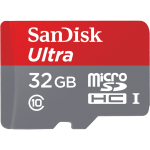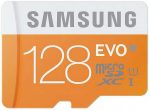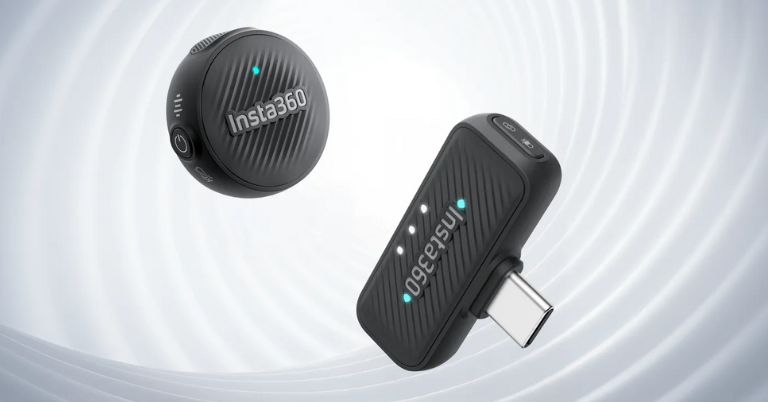
One of the perks of preferring Android over iOS is definitely the option to have a removable storage. Right from the first Android device, HTC Dream, there always had been a micro SD card slot but recently OEMs are taking this slot at stake. Still many devices include a place for micro SD cards in them. Having a micro SD card slot doesn’t always make things easy. The hardest thing about having this slot is, finding the right microSD card for your Android device.
Has it ever happened to you that you bought a microSD card in rush but later found the card to be not compatible with your device? Sometimes, the card might be compatible at first. But later when you tried using the card as the storage location in your phone’s camera app, an error pops up. Or sometimes, there was no error while taking pictures and videos of lower resolutions but the error pops up right when you tried taking burst photos, full HD videos or live videos. These kinds of errors occur when the card you chose happen to be the wrong one.
To find out the right microSD card for your device, you need to know few key elements about microSD cards. The first thing to do is to find out whether your device supports microSD cards or not. If it does, check for the highest capacity of card it supports. If you check the manual of your smartphone, there you might find few markings that you might find confusing. In this article, I would like to clarify those key elements about any microSD card that you should know before buying a new card for your daily driver.
What’s the difference between micro SDHC and SDXC?
Well, the actual difference in micro SDHC (Secure Digital High Capacity) and SDXC (Secure Digital Extended Capacity is simply the amount of data they can store. The highest possible storage capacity in micro SDHC cards is of 32GB whereas micro SDXC cards have the capacity ranging from 32GB to 2TB. Before buying a card, make sure about the compatibility between the card and phone, many low-end phones don’t support micro SDXC cards.
What does ‘class’ on microSD card signify?
In simple words, a class on a microSD card signify the minimum rate at which data may be written to or read from the card. Hence, the minimum data transfer rate of class 2 cards is 2MBps whereas that of class 10 cards is 10MBps. Remember, this is just minimum transfer rate, some top quality cards may have much faster data transfer rates. That is why all class 10 cards might not be priced the same.
What does it mean by ‘UHS’ on microSD card?
It is from 2009 that even the microSD cards have become UHS-1 or UHS-3 compatible. Though UHS cards can hit up to the data transfer rates of 312 MBps theoretically, no smartphone has been engineered to fully support the UHS standard. Hence, current UHS microSD cards can only perform data transfers at minimum data transfer rates and that is, 10 MBps and 30 MBps for UHS – I class 1 and UHS – I class 3, respectively.
How to read information written on a microSD card?


The microSD card type (SDHC or SDXC) and the storage capacity (in GB or TB) are easy to read out from the labels on the card. The three-speed classes mentioned above have logos to signify their minimum speed. Class 10 is the letter C with the number 10 inside. UHS-1 Class 1 and Class 3 are the letter U with a 1 or 3 inside, respectively. Finally, you may also see a I or II label on the card, which references a UHS bus speed.
Conclusion:
Now, you can easily make senses out of all the markings on a microSD card. Therefore, finding the card’s compatibility to your phone won’t be much of a cumbersome task. But remember, it is always wise to go for cards from reputable industries like Samsung, Sandisk, Transcend and the like. When you buy cards at cheaper prices, the quality can’t be assured. So, it is better to spend few more hundred for genuine ones over non-genuine ones. The cheaper the card, more likely it is to get corrupted.
So do you use a microSD card on your phone? If you do, which one are you currently been using? How much did you pay for it? Has it ever happened to you that your card got corrupted or stopped working without a reason? Let us know, in the comments down below.








![Best Gaming Laptops in Nepal Under Rs. 250,000 (रु 2.5 Lakhs) [2025] Best Gaming Laptops Under 2.5 lakhs in Nepal [Feb 2025 Update]](https://cdn.gadgetbytenepal.com/wp-content/uploads/2025/02/Best-Gaming-Laptops-Under-2.5-lakhs-in-Nepal-Feb-2025-Update.jpg)
![Best Gaming Laptops in Nepal Under Rs. 120,000 (रु 1.2 Lakhs) [2025] Best Budget Gaming Laptops Under Rs 120000 in Nepal 2025 Update](https://cdn.gadgetbytenepal.com/wp-content/uploads/2025/05/Best-Budget-Gaming-Laptops-Under-Rs-120000-in-Nepal-2024-Update.jpg)
![Best Laptops Under Rs. 80,000 in Nepal [2025] Best Laptops Under 80,000 in Nepal March 2025 Update](https://cdn.gadgetbytenepal.com/wp-content/uploads/2025/03/Best-Laptops-Under-80000-in-Nepal-March-2025-Update.jpg)
![Best Laptops Under Rs. 70,000 in Nepal [2025] Best Laptops Under 70,000 in Nepal March 2025 Update](https://cdn.gadgetbytenepal.com/wp-content/uploads/2025/01/Best-Laptops-Under-70000-in-Nepal-March-2025-Update.jpg)
![Best Mobile Phones Under Rs. 15,000 in Nepal [Updated 2025] Best Phones Under 15000 in Nepal 2024 Budget Smartphones Cheap Affordable](https://cdn.gadgetbytenepal.com/wp-content/uploads/2024/03/Best-Phones-Under-15000-in-Nepal-2024.jpg)
![Best Mobile Phones Under Rs. 20,000 in Nepal [Updated] Best Mobile Phones Under NPR 20000 in Nepal 2023 Updated Samsung Xiaomi Redmi POCO Realme Narzo Benco](https://cdn.gadgetbytenepal.com/wp-content/uploads/2024/01/Best-Phones-Under-20000-in-Nepal-2024.jpg)
![Best Mobile Phones Under Rs. 30,000 in Nepal [Updated 2025] Best Phones Under 30000 in Nepal](https://cdn.gadgetbytenepal.com/wp-content/uploads/2025/01/Best-Phones-Under-30000-in-Nepal.jpg)
![Best Mobile Phones Under Rs. 40,000 in Nepal [Updated 2025] Best Phones Under 40000 in Nepal 2024 Smartphones Mobile Midrange](https://cdn.gadgetbytenepal.com/wp-content/uploads/2024/02/Best-Phones-Under-40000-in-Nepal-2024.jpg)
![Best Mobile Phones Under Rs. 50,000 in Nepal [Updated 2025] Best Phones Under 50000 in Nepal](https://cdn.gadgetbytenepal.com/wp-content/uploads/2025/01/Best-Phones-Under-50000-in-Nepal.jpg)
![Best Flagship Smartphones To Buy In Nepal [Updated] Best flagship phone 2025](https://cdn.gadgetbytenepal.com/wp-content/uploads/2024/07/Best-Flagship-Phones-who-is-it-ft-1.jpg)